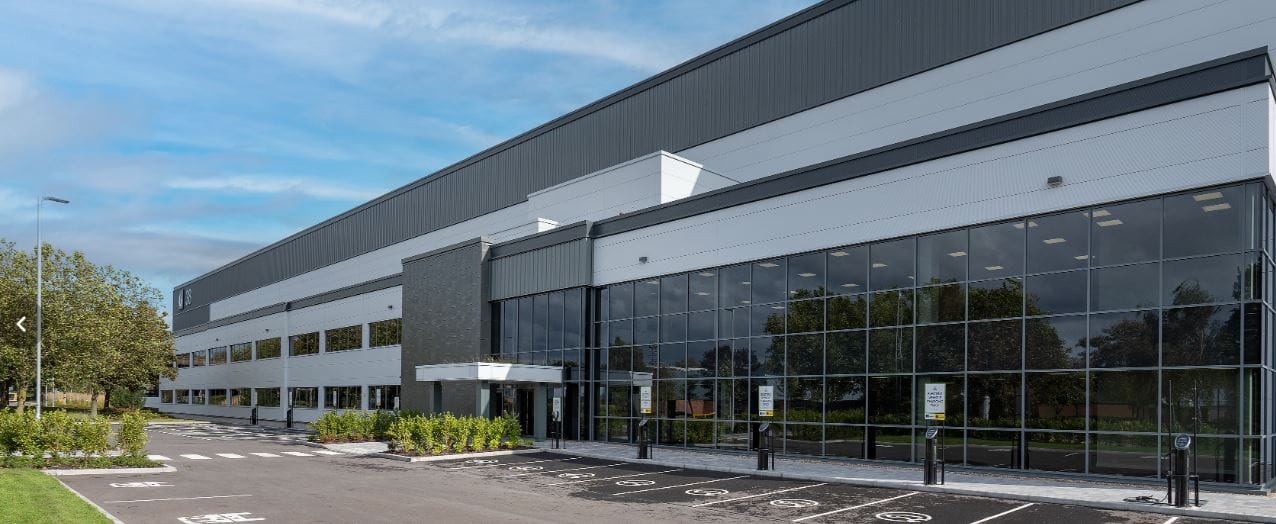Dear reader,
Welcome to this week's market update. We're celebrating our third anniversary—a milestone we're proud to share with our subscribers. Thank you for your continued support over the years. Below, you'll find our key achievements along with the latest industry insights.
Here is what we cover:
✅ Three years old: Life Sciences Real Estate celebrates
✅ Beer, Barcelona, and Birmingham: the hidden connection
✅ Industry voice: Rob Martin of LGIM
✅ Coral reefs: a metaphor for life science campuses
✅ Third Anniversary Special: Full Access for All Subscribers
To mark our third anniversary, we're providing complete access to this week's newsletter for all subscribers. Free subscribers usually see just half of the content. After experiencing the full value this week, consider upgrading to a paid subscription to maintain complete access in the future.
Read more below for all the details. Our usual deep-dive analysis and list of deals will return on 17 April.
— Stephen Ryan (connect with me on LinkedIn)
Celebrating three years of market intelligence
Since launching in March 2022, we've worked to improve understanding of Europe's life sciences real estate landscape, offering data and insights that support our clients in their decision-making process.

What began as quarterly comprehensive analyses has evolved into weekly market insights that keep pace with this rapidly developing sector. Our coverage spans the entire life sciences ecosystem:
- From Nordic labs to Mediterranean hubs: we've analysed 29 European cities where life sciences innovation is flourishing, examining their unique advantages, challenges, and growth trajectories.
- Following the investment flow: our reporting tracks capital movements, spotlighting both established investors doubling down on the sector and new players recognising its potential.
- Where research meets real estate: we explore how scientific R&D shapes facility requirements, bridging the gap between scientific breakthroughs and the specialised spaces they need.
- Cluster dynamics: our analysis examines how technology parks and innovation hubs create synergies that accelerate discovery and commercialisation.
How our clients use our intelligence
Our diverse readership leverages our data in various ways: market entrants use our 'who’s who' overviews to quickly identify potential partners, while investors and developers drill into our data to compare opportunities and gauge market positioning. Research analysts rely on our comprehensive dataset to identify emerging trends, validate market hypotheses, and accelerate their own market reporting.
All told, our proprietary database now monitors over 23 million square metres of life sciences real estate across Europe, representing €65 billion in assets and more than 1,000 transactions—intelligence that helps our clients stay ahead in this dynamic market.
Beer, Barcelona, and Birmingham
Alliance Healthcare is set to move into a new 285,158 sq ft logistics hub on the site of Carlsberg’s former Birmingham distribution centre—part of a £25 million (€29.2 million) redevelopment by the Standard Life Pooled Pension Property Fund.
For 43 years, Carlsberg’s lager flowed from its warehouse at Gravelly Industrial Park. Now, in place of pints, pharmaceuticals will be shipped across the country from this upgraded facility, designed with 18-metre eaves, 24 loading doors, modern office space with a roof terrace, and parking for 285 vehicles.

Alliance Healthcare has signed a 15-year lease on the property. The site has long been in institutional hands—Standard Life originally developed it in the 1970s and has held onto it ever since. Its location, just off Junction 6 of the M6 (also known as Spaghetti Junction), remains a major logistics draw.
The new warehouse surpasses most life sciences distribution centres in size, ranking 15th out of 47 in our proprietary database. Alliance Healthcare operates another flagship facility near Barcelona, only slightly smaller than this impressive new site.

In Q4 2021, Alliance Healthcare Spain opened a €35 million (£29.9 million) headquarters and logistics centre in the Ca n'Alemany industrial estate, Viladecans. The 25,300 sq m building was positioned for connectivity—close to Barcelona’s airport, port, and key road and rail links—and is now a key international base for clinical trial support (handling over 500 studies a year), as well as R&D, secondary pharmaceutical manufacturing, and cryogenic drug distribution via its Alcura and Alloga subsidiaries.
Regardless of whether Carlsberg truly deserves its "probably the best" tagline, Alliance Healthcare's new Birmingham hub promises to deliver a reliable logistics solution. The 15-year lease demonstrates the company's long-term commitment to this strategic location.
Linguistic footnote: the word lager comes from the German lagern, meaning “to store”—so perhaps the link between beer and logistics hubs isn’t so far-fetched after all.
Industry voice: Rob Martin of LGIM

Rob Martin is Global Head, Investment Strategy & Research, Private Markets at Legal & General Investment Management and he has spoken and written eloquently about the Four Ds.
The Four Ds are demographics, decarbonisation, digitalisation, and deglobalisation—megatrends reshaping portfolios towards 2030.
An ageing global population (demographics) drives demand for specialist housing and healthcare assets. Decarbonisation encompasses the shift toward renewable energy infrastructure and sustainable materials—investments that benefit both the planet and portfolios.
Digitalisation highlights immense growth in data centres and expanding digital infrastructure, keeping our online world spinning. Deglobalisation emphasises resilient, onshore industrial and logistics real estate amid supply chain uncertainties and geopolitical tensions.
Compare this to the Four Ls —a framework introduced by Hendrik Staiger of BEOS (another of our Industry Voices): living, logistics, light industrial, and life sciences. While Martin’s “Ds” describe deep macro drivers, Staiger’s “Ls” are about targeted sector positioning.
Whether you're Team D or Team L, one thing is clear: future-proofing your portfolio means looking beyond traditional asset classes. At this rate, we may have an investment mnemonic for every letter by 2030—but for now, these frameworks offer valuable lenses on a changing world.
Why coral reefs are a great metaphor for life sciences campuses
Like bee hives, coral reefs offer a vivid way to understand how innovation takes root in specialised real estate. If bees represent cooperation in motion, coral reefs show us how place and partnership support long-term growth.

A coral reef thrives through close connections between very different species. Tiny algae live inside the coral, turning sunlight into energy. In return, the coral gives them shelter. This simple exchange supports a complex ecosystem of fish, crustaceans, and other marine life—even in waters low in nutrients.
Life science campuses follow a similar pattern. Anchor institutions—like universities and hospitals—offer space, equipment, and expertise. Around them, startups and scaleups cluster, bringing fresh ideas and energy. The result is a real estate ecosystem where everyone gains by being part of something bigger.
Europe’s life science “reefs”
Across Europe, campuses are actively building these collaborative environments:
- Arenberg Research-Park (Belgium) connects spin-offs to KU Leuven and shared labs.
- Bio4Dreams (Italy) partners with universities to support early-stage biotech startups.
- IZB Martinsried (Germany) hosts 50+ companies next to the Max Planck Institutes.
- Sci-Tech Daresbury (UK) collaborates with the Science and Technology Facilities Council and local universities.
- Science and Technology Park of Gipuzkoa (Spain) hosts research institutions and connects academic innovation with business development.
- Umeå Biotech Incubator (Sweden) links academic research with business support.
These aren’t just spaces—they’re designed ecosystems where research, ideas, and innovation can grow stronger together. More examples can be found here.
That's it for now. Our next edition will arrive on 17 April.
